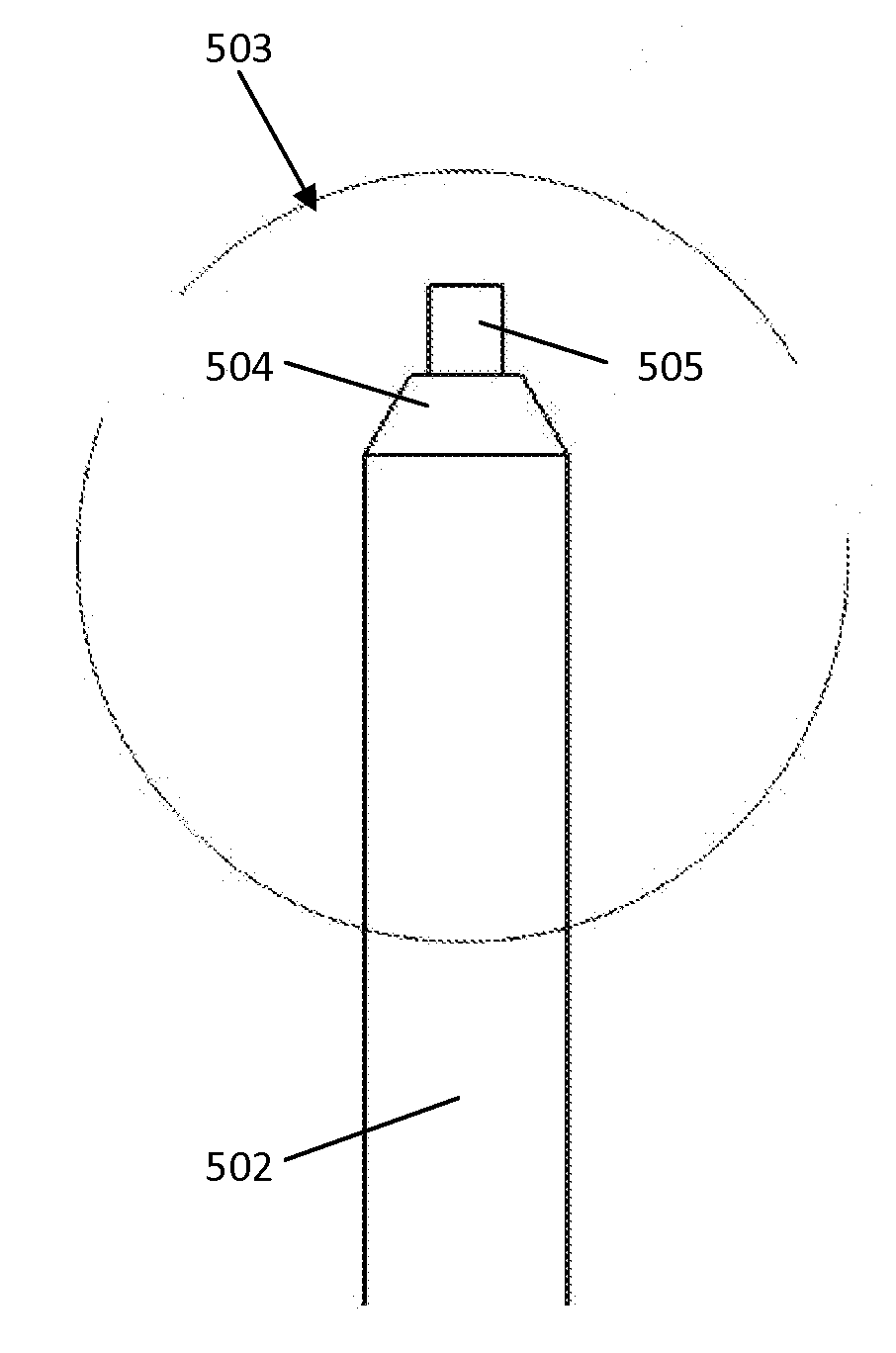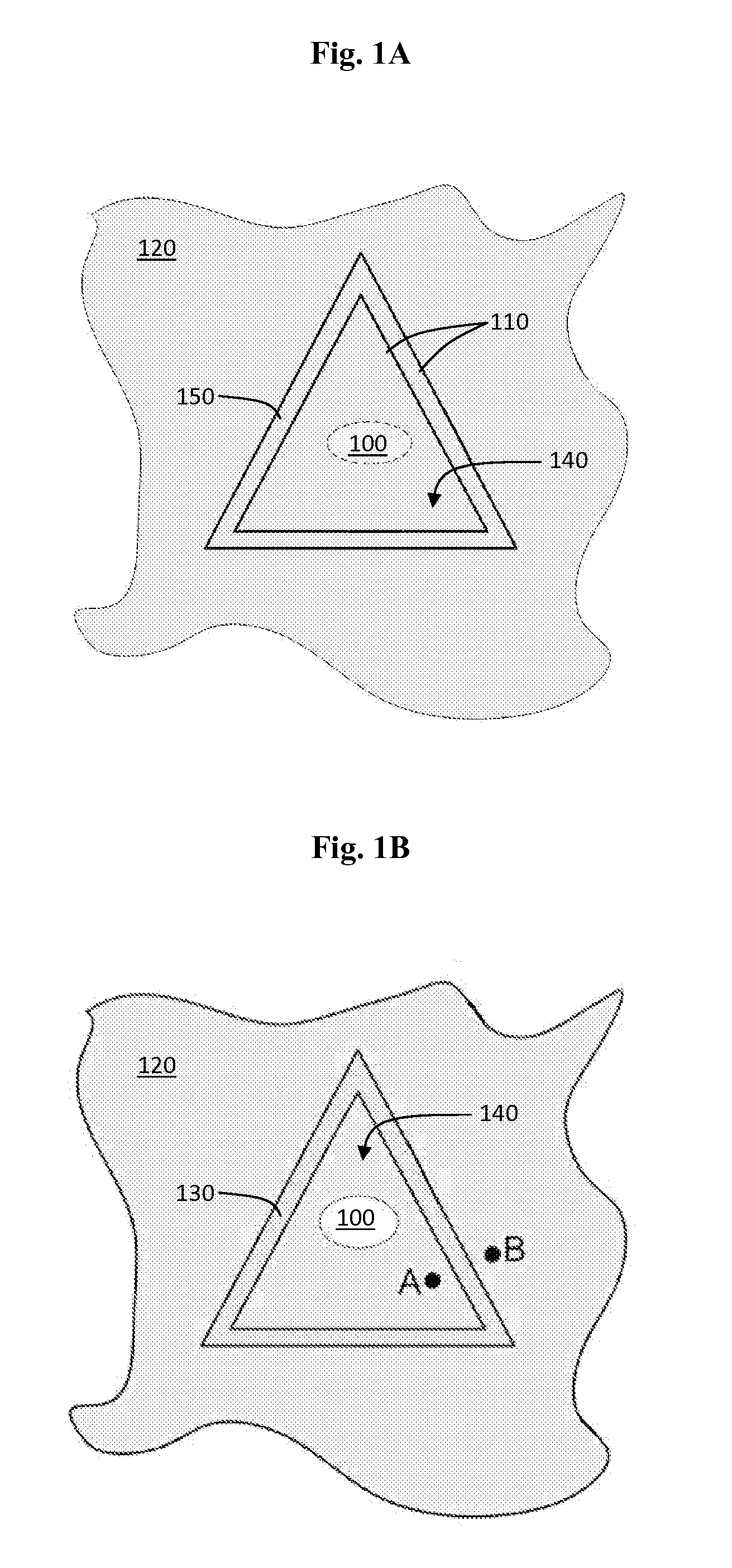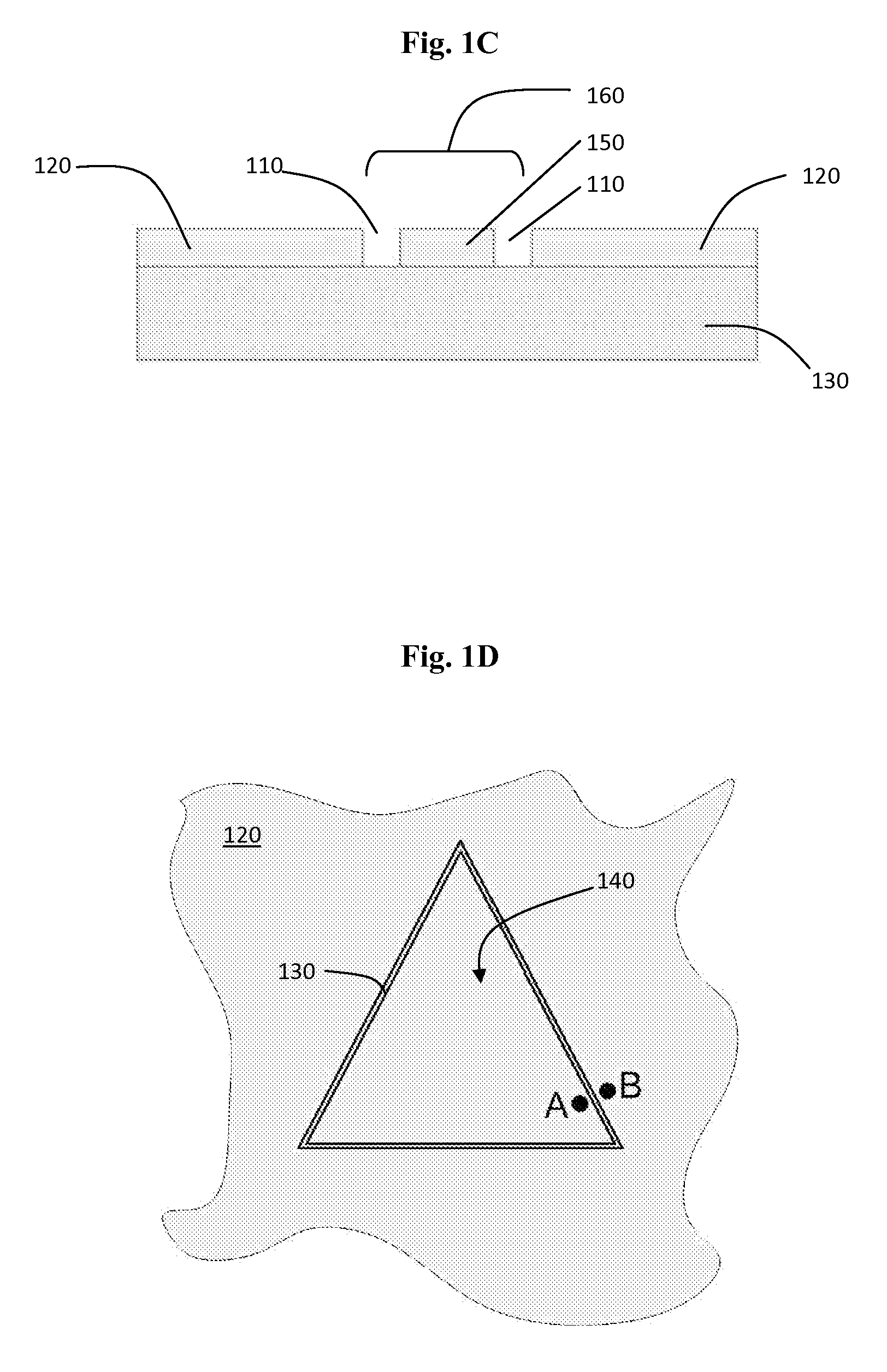Method for Decreasing the Size and/or Changing the Shape of Pelvic Tissues
a technology of pelvis and pelvis, applied in the field of surgical methods, can solve the problems of compromising sexual function, sexual dysfunction, and many women's unhappy with the size, shape and/or contour of the vagina or labia, and achieve the effect of not leading to loss of function or poor aesthetic results
- Summary
- Abstract
- Description
- Claims
- Application Information
AI Technical Summary
Benefits of technology
Problems solved by technology
Method used
Image
Examples
first embodiment
[0033]A first embodiment, depicted in FIGS. 1A-1D, may provide for protection of the Graffenberg Spot (G-Spot). In this embodiment, the vaginal mucosa of the G-Spot 100 may be left intact. At least one incision 110 of any known shape, preferably triangular-shaped, may be made around the G-Spot 100, as shown in FIG. 1A. The at least one incision 110 may be carried through the thickness of the vaginal mucosa 120. The at least one incision 110 may spare the endopelvic fascia 130. The at least one incision 110 may assume any known shape thereby defining the shape of an island 140 of tissue. In a preferred embodiment, as shown in FIGS. 1A-1D, a triangular-shaped island 140 of mucosa 120 may be created by the at least one incision 110. A strip 150 of mucosa 120 may be removed from the circumference of the island 140 to expose a channel 160 of endopelvic fascia 130, as shown in FIG. 1B and FIG. 1C. The diameter of this channel 160 will determine the final shape and / or size of the vagina. A...
second embodiment
[0034]A second embodiment, depicted in FIGS. 2A-2C, may provide for vaginal shaping without removal of fascia. In this embodiment, as shown in FIG. 2A, strips 250 of vaginal mucosa layer 220 may be removed while sparing the underlying endopelvic fascia 230 and nerve injury (see FIG. 2B). Rather than pulling the mucosal 220 edges together and creating a submucosal deformity, RF energy may be applied to shrink the endopelvic fascia 230 and bring the mucosal 220 edges closer together, as shown by the relative movement of point A and point B in FIGS. 2B and 2C. The limited penetration of RF energy acts to spare the underlying nerve structure and improves the thickness of underlying tissue. The mucosal 220 edges may be left “as is”, approximated with sutures or glue, or closed by any other manner known within the art. Although RF is the preferred energy source, any other types of energy known within the art including but not limited to laser energy, microwave energy, chemical energy, and...
third embodiment
[0035]A third embodiment, depicted in FIGS. 3A-3C, may provide for vaginal shaping without removal of mucosa. As shown in FIG. 3A, one or more incisions 310 may be made in the mucosa 320. The endopelvic fascia 330 or other submucosal tissue may be left attached to the mucosa 320. As shown in FIG. 3B, RF energy may be applied to the endopelvic fascia 330 or other submucosal tissue exposed between the one or more incision 310 margins. Such an application of energy will cause shrinkage of such endopelvic fascia 330 tissue with proportional contraction of the overlying mucosa 320 and spare the deep nerves and subfascial or subcutaneous tissue 335. Any such endopelvic fascia 330 that is left exposed (as expressly disclosed in all embodiments) may be treated with RF energy. In this manner, the mucosal 320 edges closer together and provide a new contour or shape to the mucosa 320, as shown in FIG. 3C, as the mucosal 320 edges are motivated against each other due to the shrinkage of the end...
PUM
 Login to View More
Login to View More Abstract
Description
Claims
Application Information
 Login to View More
Login to View More - Generate Ideas
- Intellectual Property
- Life Sciences
- Materials
- Tech Scout
- Unparalleled Data Quality
- Higher Quality Content
- 60% Fewer Hallucinations
Browse by: Latest US Patents, China's latest patents, Technical Efficacy Thesaurus, Application Domain, Technology Topic, Popular Technical Reports.
© 2025 PatSnap. All rights reserved.Legal|Privacy policy|Modern Slavery Act Transparency Statement|Sitemap|About US| Contact US: help@patsnap.com



